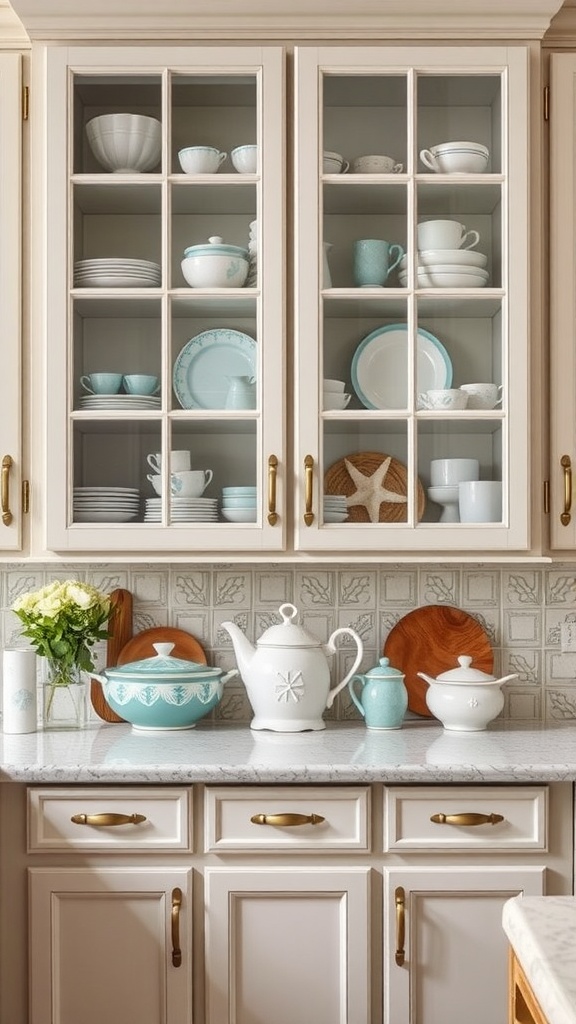21 Inside Chicken Coop Ideas to Inspire Your Poultry Space
Building a chicken coop isn’t just about creating a safe and functional space for your flock—it’s about crafting an environment that promotes their health, happiness, and productivity. Whether you’re a seasoned poultry owner or just starting, it’s essential to think about both practicality and design when planning your chicken coop. From cozy nesting boxes to creative, eco-friendly storage solutions, we’ve gathered 21 inside chicken coop ideas that will inspire you to build the best space for your chickens.
In this article, we will explore a variety of ideas that will help you make your chicken coop more efficient, comfortable, and visually appealing. Each suggestion is tailored to help you maximize space and ensure that your chickens live happily and healthily. Let’s dive into these practical and creative ideas to get you started!
1. Nesting Boxes: The Cozy Hideaways Your Hens Will Love
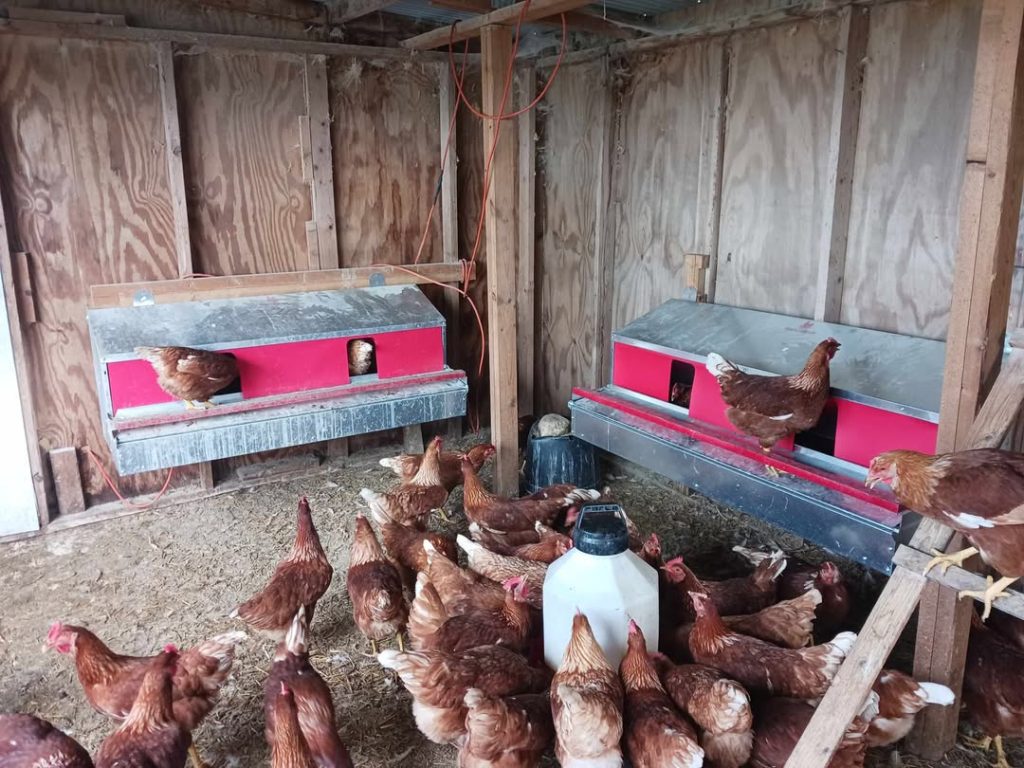
Nesting boxes are an essential part of any chicken coop, providing a comfortable and private space where your hens can lay their eggs. A well-designed nesting box will help keep your eggs clean, reduce stress among your flock, and encourage your hens to lay in one spot. When planning your nesting boxes, think about ease of access, privacy, and ventilation.
The classic design for nesting boxes is a simple wooden or plastic box with an open front. However, for added comfort and functionality, you can consider stacking multiple boxes vertically or horizontally depending on your coop’s size. Adding soft bedding like straw or wood shavings inside the boxes will make them extra cozy for your hens.
Consider placing the boxes low to the ground for easy access and maintenance. If your chickens are less experienced or smaller in size, a lower box might be more comfortable for them. Also, keep in mind that you’ll need one box for every three or four hens. To minimize overcrowding, make sure to provide enough space for each hen to feel comfortable.
For an even more unique twist, you could try building a multi-functional nesting area that doubles as storage for feed or cleaning supplies. This way, you maximize space and keep everything organized.
2. Roosting Bars: Comfort and Space for Your Chickens
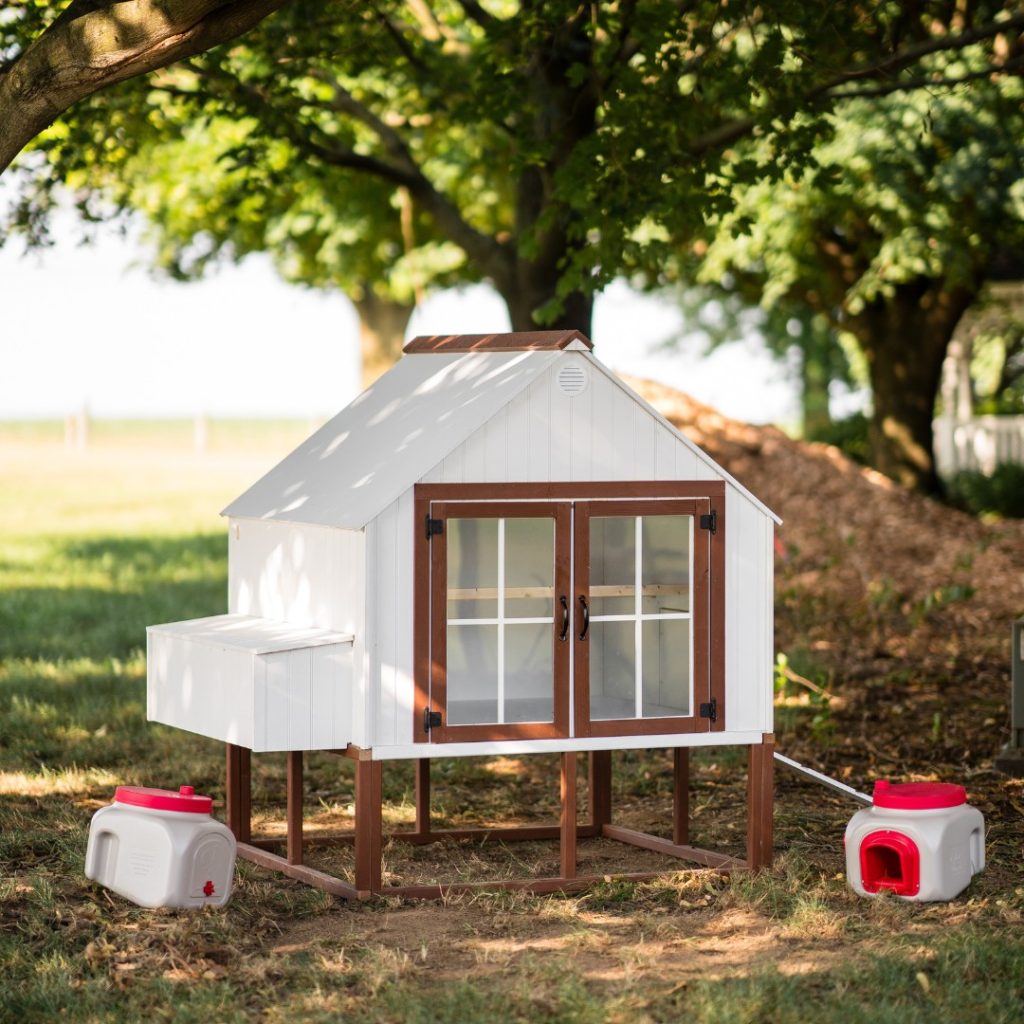
Roosting bars are an essential feature in your chicken coop, providing your chickens with a comfortable place to sleep. Chickens instinctively prefer to roost off the ground at night, which helps them feel safer and more secure. When designing your roosting area, it’s important to think about the height, number of bars, and material used.
The ideal height for roosting bars is around 2-3 feet from the ground, with the bar positioned horizontally. You can use a variety of materials like wood, metal, or even natural branches. Wood is the most common material because it’s easy to work with, provides grip, and can be easily cleaned. However, some people opt for tree branches to provide a more natural, rustic feel.
Make sure to give each chicken about 8-10 inches of space along the bar. If you’re housing several chickens, consider adding multiple bars at varying heights so they have choices and can avoid conflicts. Additionally, ensure that the bars are wide enough to keep their feet comfortable overnight.
Roosting bars can be placed parallel to the nesting boxes or on a separate level for added space. In a smaller coop, you can even attach the bars to the walls or ceiling, making efficient use of vertical space.
3. Chicken Feeder and Waterer Stations: Functional and Efficient
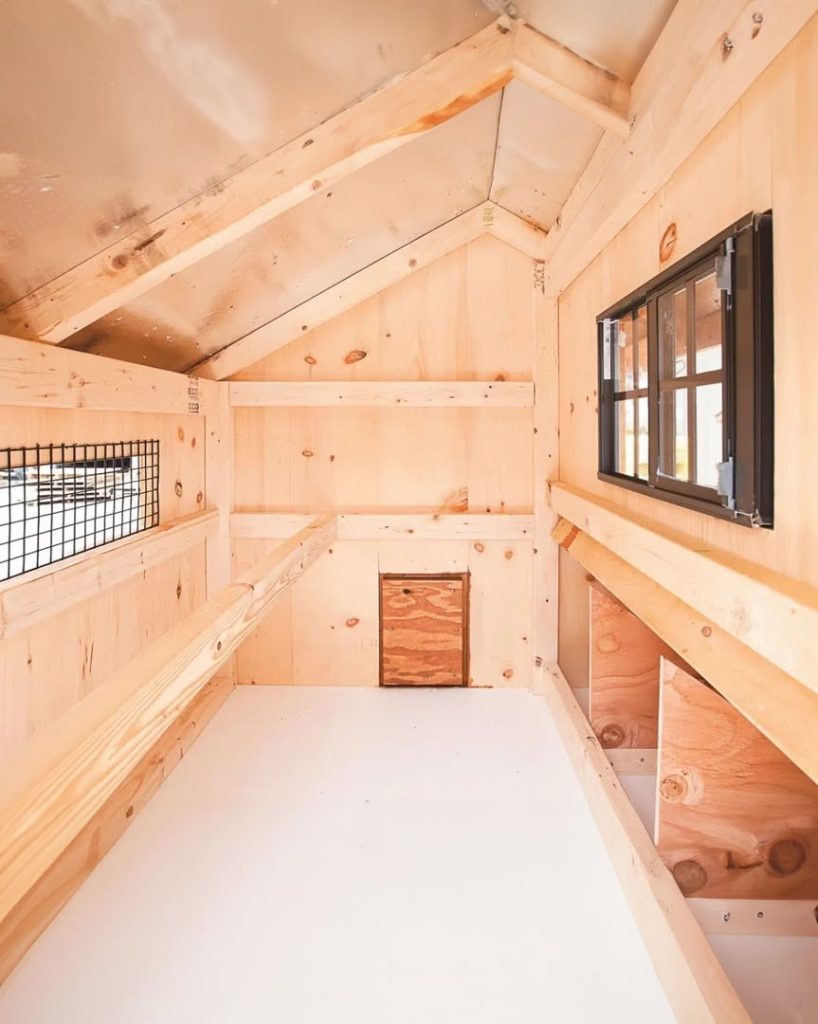
A well-organized feeding and watering system is crucial for keeping your chickens happy and healthy. Whether you opt for hanging feeders, automatic waterers, or DIY solutions, the goal is to provide easy access to food and water while minimizing waste and mess.
Feeding stations can be as simple or as elaborate as you prefer. Hanging feeders are a popular choice, as they keep food off the ground and help prevent it from becoming contaminated by droppings or dirt. If you use a hanging system, ensure it’s positioned at the right height for your chickens to comfortably eat. You can also consider using long, trough-style feeders if you have a large flock.
Waterers are equally important, especially during hot summer months. Automatic or gravity-fed waterers work well for reducing the need for constant refilling. Some owners opt for traditional watering containers, but these can often lead to spillage, which can create a messy environment. To avoid this, look for waterers with spill-resistant features, such as a narrow spout or a self-contained basin.
A good rule of thumb is to provide one waterer and one feeder for every 6-8 hens. If you have more than that, be sure to add extra stations to reduce competition for resources.
4. Chicken Coop Window for Natural Light
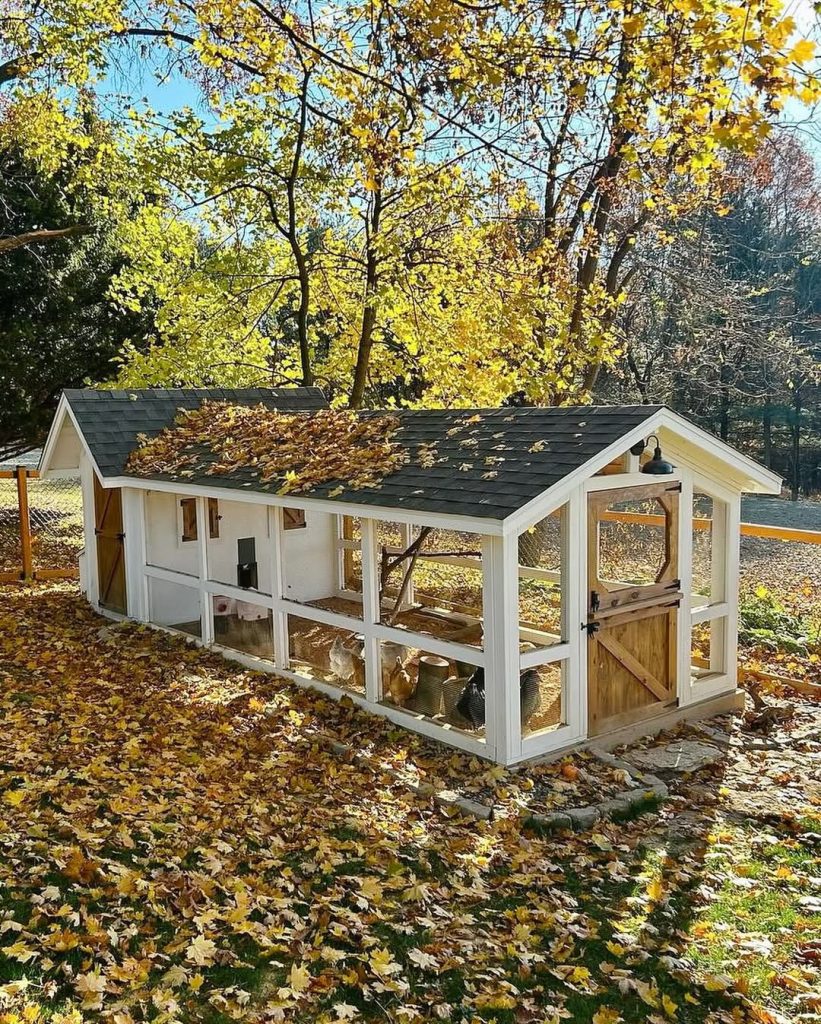
Proper lighting is essential in a chicken coop, not just for you as the owner, but for the health and productivity of your flock. Natural light helps to regulate their sleep-wake cycles, and it can also improve their mood and energy levels. The best way to incorporate natural light into your chicken coop is by installing windows.
When selecting windows, consider the safety of your flock. The windows should be securely covered with chicken wire or mesh to prevent predators from getting in. If your chicken coop is small, even a small window can have a big impact by brightening the space and helping to ventilate it. The most common types of windows used in chicken coops are louvered windows, sliding windows, or simply glass panes with mesh screens.
Windows should be positioned to allow ample sunlight into the coop during the day, but also allow for ventilation at night. Make sure that the windows are not positioned in a way that might expose your chickens to too much wind or direct sunlight, which could cause stress. Keep in mind that adding windows will help reduce the need for artificial lighting, especially during the long winter months when sunlight is scarce.
5. Under-the-Roost Storage for Easy Clean-Up
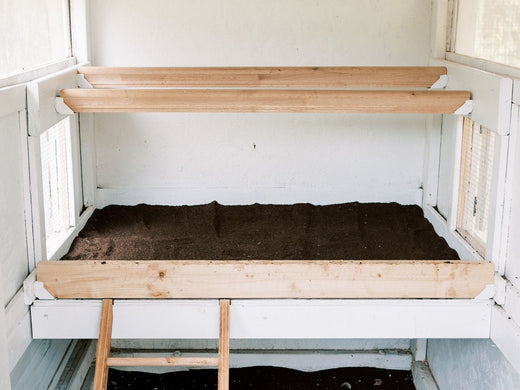
Maximizing the use of space in your chicken coop is key to maintaining an efficient and organized environment. One often-overlooked area for storage is the space underneath the roosting bars. This space can be used to store tools, bedding, and even food for your chickens, helping to keep your coop tidy and easy to clean.
You can install simple shelves or boxes underneath the roosting area, making sure that everything you need for cleaning and maintenance is easily accessible. A great storage solution could include a pull-out drawer or a removable tray for collecting chicken waste, which will make cleaning the coop much easier. You can also create a designated space for food storage, such as a sealed container to keep feed fresh.
By keeping your cleaning supplies, feed, and bedding close at hand, you’ll reduce the time spent searching for tools or supplies. This will also ensure that your chicken coop stays organized and that all the necessary materials are within reach when you need them.
6. Ventilation System: Keeping Your Coop Fresh

Ventilation is one of the most important aspects of any chicken coop. Without proper airflow, the coop can become stuffy, and the build-up of ammonia and moisture can lead to health problems for your chickens. A good ventilation system will help keep your coop fresh, dry, and odor-free, ensuring your flock stays healthy and happy.
The best way to ensure adequate ventilation is by installing vents near the top of the coop to allow warm, moist air to escape. This should be paired with lower vents to allow fresh air to enter. A combination of side windows and roof vents can create a cross-breeze that promotes airflow while keeping your chickens comfortable.
For colder climates, you may need to add additional ventilation to prevent frostbite while still keeping the area warm. The goal is to keep the temperature and humidity levels balanced inside the coop. You can install automatic vent systems that open and close based on temperature, or you can go for manual systems that allow you to adjust ventilation depending on the season.
7. Flooring Options: Comfort and Cleanliness Combined
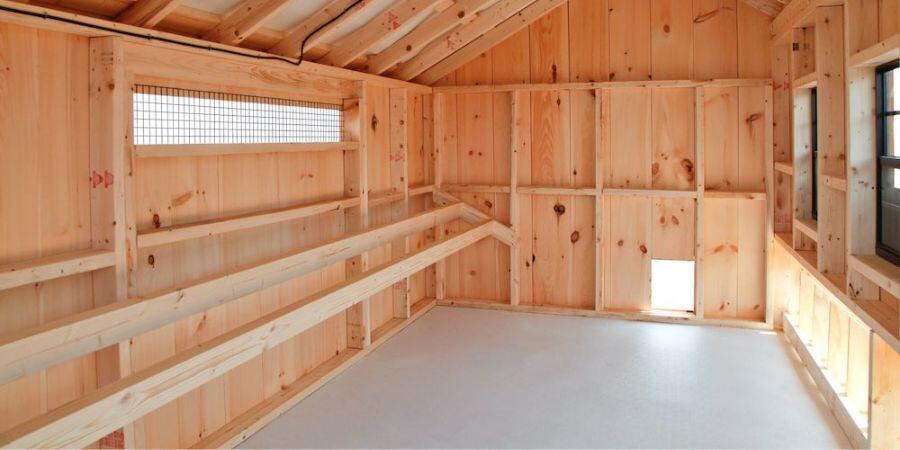
Choosing the right flooring material for your chicken coop is crucial for both comfort and cleanliness. The flooring will directly impact your chickens’ health, as it needs to be comfortable, non-toxic, and easy to clean. There are several options to consider, including straw, wood shavings, sand, and rubber mats.
Straw and wood shavings are popular bedding materials because they provide comfort and absorb moisture well. They also help to control odors and can be composted when soiled. However, these materials do need to be changed regularly to keep the coop clean.
Another option is using sand as the flooring. Sand is low-maintenance, drains well, and makes cleaning easy. You can rake the sand to remove waste and replenish it as needed.
For added comfort and ease of cleaning, you can use rubber mats as flooring. These mats provide a soft surface for your chickens while also being easy to clean and sanitize. They can also help reduce the wear and tear on wooden floors, especially if you’re dealing with larger flocks.
8. Chicken Coop Door Ideas: Easy Access and Safety
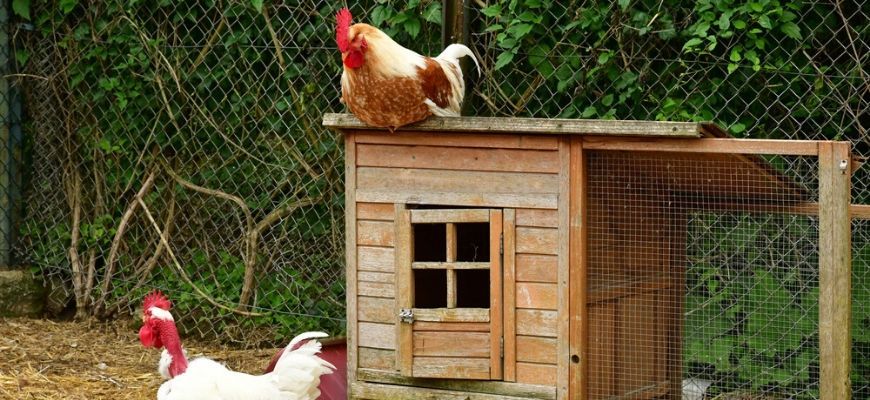
A well-designed chicken coop door should provide easy access for both you and your chickens while also keeping predators out. There are several types of doors to consider, depending on the size of your coop and your flock’s needs.
For small coops, a simple hinged door can work well. If you have a larger coop or need to make frequent trips in and out, a sliding door may be more practical. Automatic doors are becoming increasingly popular, as they open and close based on a timer or a light sensor, reducing the need for you to manually open and close the coop every day.
For safety, be sure to add a secure locking mechanism to your chicken coop door. This could include latches, padlocks, or even a sliding bolt to prevent predators from getting in at night. It’s also a good idea to add a second layer of security by installing a metal mesh or hardware cloth around the doorframe.
9. Natural Elements: Adding Greenery to Your Coop

Adding natural elements to your chicken coop is a wonderful way to make it feel more inviting and provide your chickens with a more stimulating environment. You can introduce plants into the coop to promote a healthier atmosphere by improving air quality and even adding a touch of greenery.
Plants such as rosemary, lavender, and thyme are not only aesthetically pleasing but also serve practical purposes. For instance, rosemary and lavender can act as natural insect repellents, keeping pests like flies and mosquitoes away from your flock. These plants can also help provide a calming atmosphere for your chickens.
Another idea is to incorporate greenery outside the coop, like hanging planters or climbing vines that wrap around the coop. This helps to blend the structure into your yard or garden, making it a more aesthetically pleasing part of your outdoor space.
10. Chicken Coop Lighting: Artificial Daylight for Winter Months
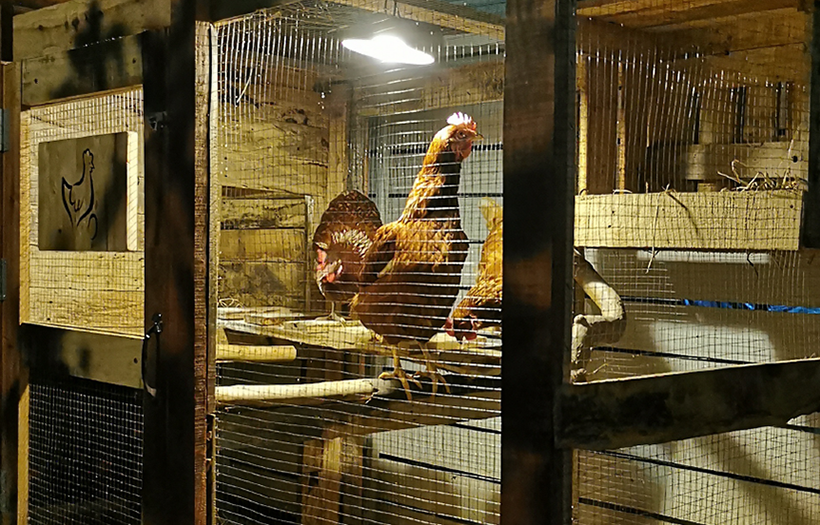
In regions where daylight is limited during the winter months, providing artificial light in your chicken coop can help keep your hens productive and active. Chickens need about 12-14 hours of light each day to maintain a healthy egg-laying cycle, so it’s important to provide supplemental lighting during the winter.
LED lights are a great option for chicken coop lighting because they are energy-efficient and can be easily installed. You can use timers to set the lights to turn on in the early morning and off at dusk, mimicking the natural daylight cycle. Be sure to position the lights above the roosting areas so that they don’t disturb your chickens’ sleep patterns.
When adding lighting, it’s important to avoid too much brightness, as this can cause stress for your chickens. A dim light or soft glow is ideal, as it won’t interfere with their natural behavior but will still provide the necessary daylight for laying eggs.
11. Multi-Level Coop Design: Maximizing Vertical Space

In smaller coops, it’s crucial to make the most out of every square foot of space. A multi-level coop design can help you maximize your chicken coop’s vertical space by adding additional levels for roosting, nesting, and even storage. A multi-level coop not only provides more room for your chickens to roam but also helps create an environment that mimics their natural habitat.
You can create multi-level platforms connected by ramps or ladders, allowing your chickens to explore and move freely between levels. This design is perfect for flocks that enjoy roosting at different heights and helps to reduce overcrowding in smaller coops.
Additionally, multi-level designs can provide more storage space for your feed, tools, and cleaning supplies. Consider adding shelving or boxes under the upper levels to keep everything organized and easily accessible. A well-planned multi-level coop can help ensure your chickens have the space and comfort they need to thrive.
12. Chicken Coop Ramp for Easy Access
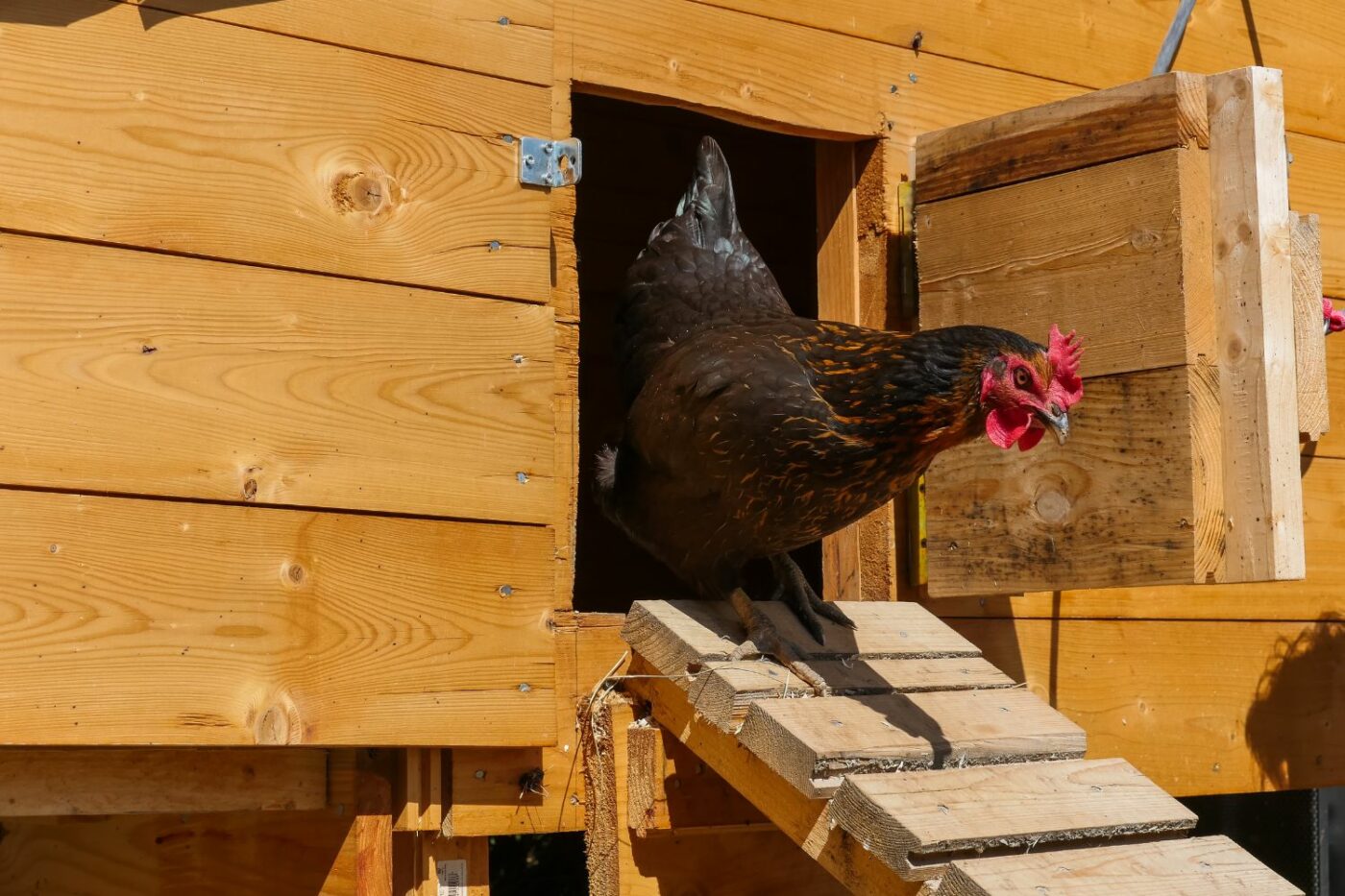
If you have a multi-level chicken coop or want to provide your chickens with easy access to a higher roosting area, a ramp is an excellent addition. Chickens are natural climbers, but providing a ramp ensures they can navigate safely and comfortably between levels. This is particularly important for older chickens or those with mobility issues.
When designing your ramp, ensure that it’s wide enough for chickens to comfortably walk up and down. The surface should have a slight incline and be rough enough to provide grip, preventing slipping. You can use materials like wood or even chicken wire on the surface to give chickens something to grip onto.
Additionally, consider adding a railing or barrier along the sides of the ramp to prevent your chickens from falling off. Ensure that the ramp is positioned in a way that allows easy access to both the nesting boxes and roosting areas, making it a convenient pathway for your flock.
13. Chicken Coop Play Area: Keep Your Flock Entertained

Just like people, chickens need to stay active and mentally stimulated to be happy. A chicken coop play area is a great way to keep your chickens entertained while encouraging natural behaviors like scratching, pecking, and foraging. Creating an enrichment zone inside the coop can help prevent boredom, reduce stress, and improve your chickens’ overall well-being.
Consider adding a few fun elements to your chicken coop’s interior. Hanging branches or ropes can serve as perches or climbing structures. You can also scatter treats, like corn or seeds, on the ground to encourage foraging. Another great idea is a dust bath area where chickens can roll around and clean themselves.
A well-designed play area will not only enrich your chickens’ lives but also help keep them fit and engaged throughout the day. This can reduce aggression, prevent feather picking, and keep them active and healthy.
14. Chicken Coop Insulation for Cold Climates

If you live in a colder climate, proper insulation in your chicken coop is essential to protect your flock from harsh winter conditions. Insulating your coop will help maintain a stable temperature inside, preventing your chickens from becoming too cold or overheated.
You can use materials like foam board insulation or fiberglass batts to insulate the walls and roof of your chicken coop. It’s also important to ensure that any vents or windows are properly sealed to prevent drafts from entering the coop.
In addition to insulating the coop, consider adding heated waterers or heat lamps to keep your chickens comfortable during the winter months. However, be sure not to overheat the space, as chickens prefer cool temperatures, so maintain a balanced temperature between 30-40°F in winter.
15. Cleaning Station: Make Coop Maintenance Easier

Keeping your chicken coop clean is essential for the health of your flock and your convenience. Creating a dedicated cleaning station within the coop or nearby can save you time and hassle. A cleaning station should include everything you need for daily and weekly maintenance, making the process as smooth as possible.
At a minimum, your cleaning station should include brooms, scoops, gloves, and waste bags for easy disposal of chicken waste. For larger coops, consider adding a small storage cabinet or shelf where you can store cleaning supplies. You can even add a hose or water source nearby to wash down the floor when needed.
A well-organized cleaning station not only ensures your coop stays sanitary but also helps you stay on top of the upkeep, which will benefit your chickens’ health in the long run.
16. Chicken Coop Ceiling Ideas: Protection and Space Optimization
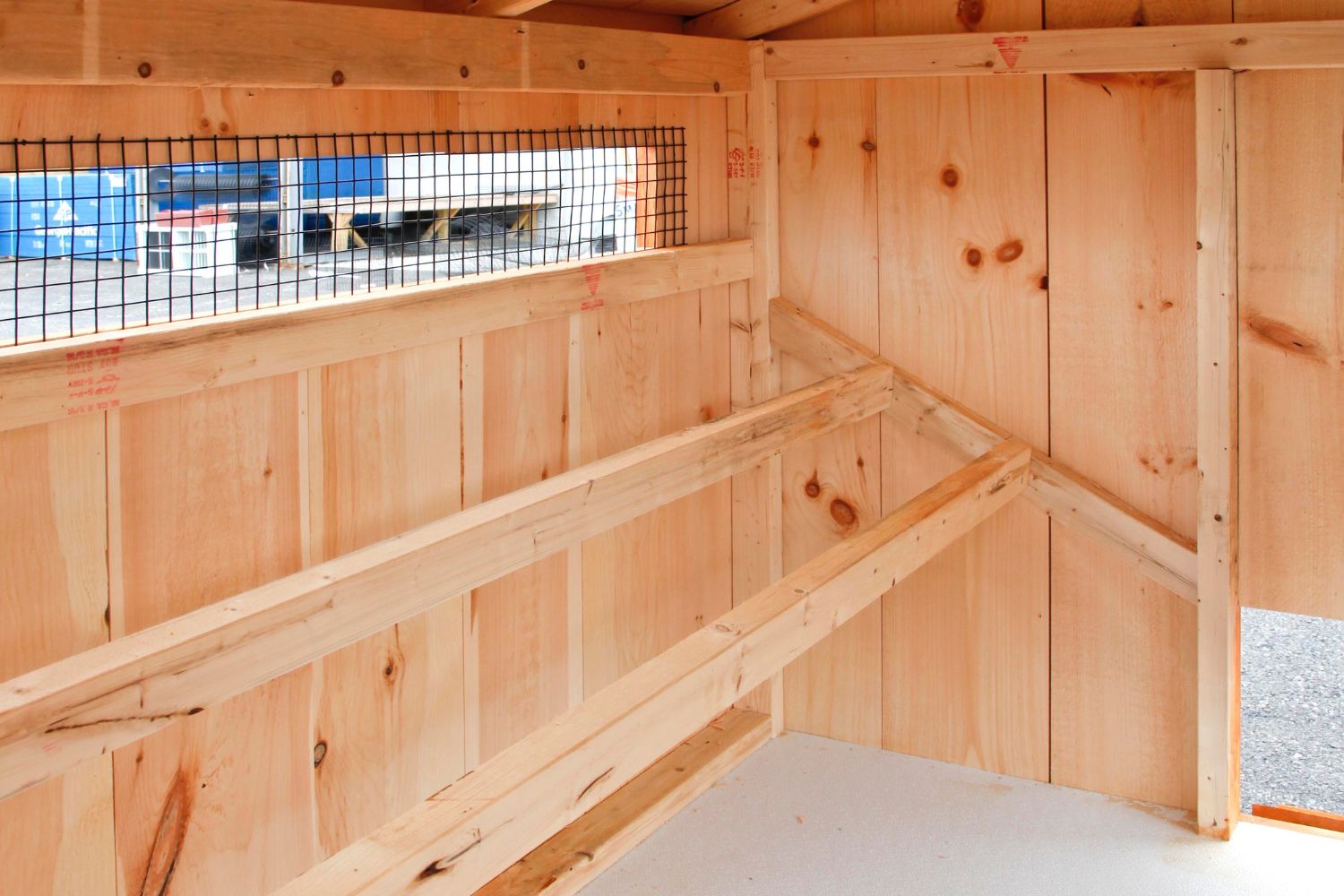
The ceiling of your chicken coop is often overlooked, but it can be a valuable space for both protection and organization. The ceiling can help protect your chickens from predators that might try to reach them from above. Additionally, you can use the ceiling space for added storage or even install lighting to improve visibility.
Consider using wire mesh or sturdy roofing materials to reinforce the coop’s ceiling, providing an extra layer of protection from aerial predators. If your coop has a higher ceiling, you can install additional shelving or hanging storage units to free up floor space for your chickens.
Installing lights on the ceiling will help you keep the coop bright during the darker months, allowing your chickens to maintain their egg-laying schedule. Just be sure the lights are placed at a safe distance to avoid disturbing their sleep cycle.
17. Chicken Coop Dividers: Create Separate Areas
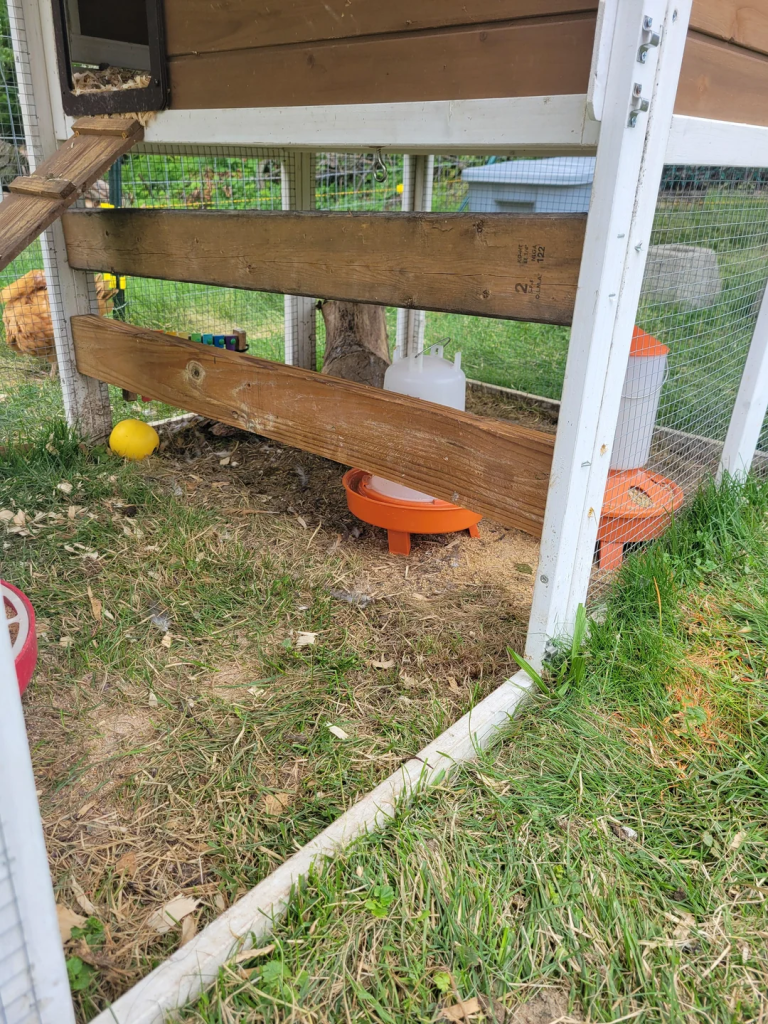
If you have multiple flocks or want to create different zones within your chicken coop, dividers are a great way to separate space without taking up too much room. Dividers can help reduce conflict, provide privacy, and allow you to separate roosting areas from nesting boxes.
There are many ways to create dividers in your chicken coop. For example, you can use wooden slats, wire fencing, or even curtains made of chicken wire. The material you choose will depend on your coop’s design and the level of separation you need.
Dividers are particularly helpful if you’re raising chicks alongside adult hens, as they can keep the young chickens safe and separated until they are large enough to join the rest of the flock.
18. Predator-Proofing: Ensuring the Safety of Your Flock
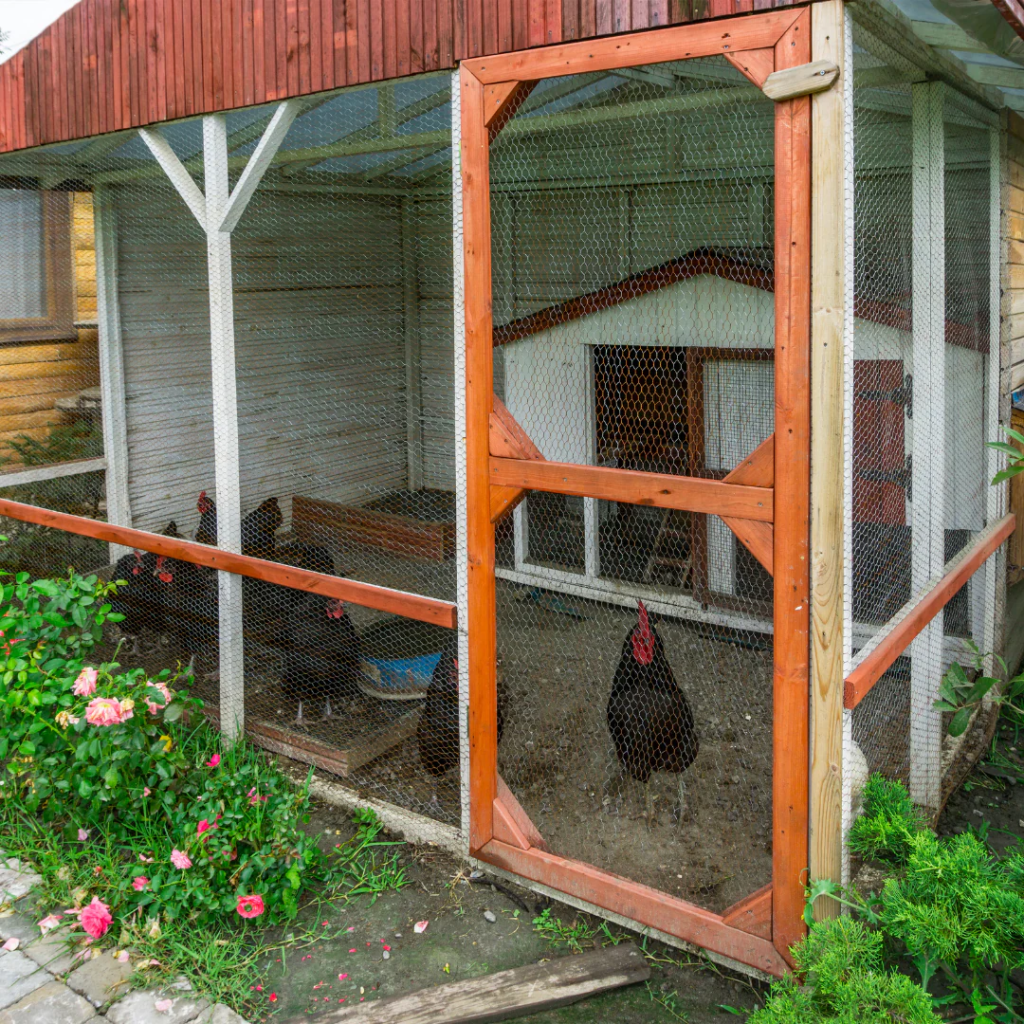
One of the biggest concerns for chicken owners is keeping their flock safe from predators. From raccoons to hawks, there are many animals that might try to access your chicken coop. To ensure your chickens’ safety, it’s important to invest in predator-proofing measures both inside and outside the coop.
Start by securing all doors and windows with strong locks or latches that predators can’t easily open. Install sturdy wire mesh or hardware cloth around the coop and beneath the floor to prevent digging animals from getting inside. It’s also important to check the integrity of the coop regularly to ensure there are no weak points.
For added security, consider using motion-sensor lights or cameras to monitor your chickens at night. This added layer of protection will give you peace of mind and ensure that your flock stays safe from harm.
19. Upcycled Materials: Eco-Friendly and Cost-Effective
If you’re on a budget or simply want to build a sustainable chicken coop, upcycled materials are a great choice. Using recycled or repurposed materials can save you money while helping the environment. Many chicken owners have found success in using pallets, old wood, and other discarded items to create functional, unique, and eco-friendly coops.
Pallets can be transformed into everything from nesting boxes to walls and floors. Old windows or doors can be repurposed as windows for your coop, providing natural light and ventilation. The key is to ensure that any upcycled materials you use are safe for your chickens and won’t cause harm.
By thinking creatively and using materials that would otherwise go to waste, you can build an attractive and functional chicken coop that’s kind to both your wallet and the environment.
20. Automated Systems: Convenience at Its Best

To make chicken keeping even easier, consider adding automated systems to your coop. From automatic doors to feed dispensers, these systems can reduce your daily workload and ensure your chickens are well taken care of, even when you’re not around.
Automatic doors are a popular choice for chicken owners who want to let their chickens out at sunrise and keep them safe at night without the need for manual intervention. Similarly, automatic waterers and feeders can ensure that your chickens have a steady supply of food and water throughout the day.
Adding these systems to your coop can free up more time for you while still providing your flock with the care they need. Be sure to choose high-quality, reliable systems to ensure they work efficiently and don’t malfunction.
21. Coop Ventilation Fans: Keep Things Cool in Hot Weather

During hot weather, chickens can become stressed and uncomfortable. To help keep them cool and comfortable, installing a ventilation fan in your chicken coop is a great idea. A fan will help circulate air, reduce humidity, and keep the temperature inside the coop manageable during the summer months.
Choose a fan that’s specifically designed for poultry use, as these are made to be durable and safe for chickens. Position the fan near the ceiling or high on a wall to help move hot air out of the coop. Additionally, ensure that the fan is set up to allow for proper airflow without creating a draft that could stress your chickens.
Proper ventilation is just as important in the summer as it is in the winter. A well-ventilated coop will help keep your chickens cool, healthy, and happy throughout the warmer months.
Conclusion: Crafting the Perfect Chicken Coop for Your Flock
Designing the perfect chicken coop is all about balancing functionality, comfort, and safety for your flock. From nesting boxes and roosting bars to ventilation systems and automated features, these 21 inside chicken coop ideas will help you create an environment that keeps your chickens happy and healthy.
Whether you’re a novice chicken keeper or an experienced poultry enthusiast, the right design elements can make a huge difference in your flock’s well-being. By considering both practical and aesthetic aspects, you can build a coop that provides comfort, convenience, and security, making life easier for both you and your chickens.
Take inspiration from these ideas, adapt them to suit your space, and start planning a chicken coop that will be the envy of your backyard!






